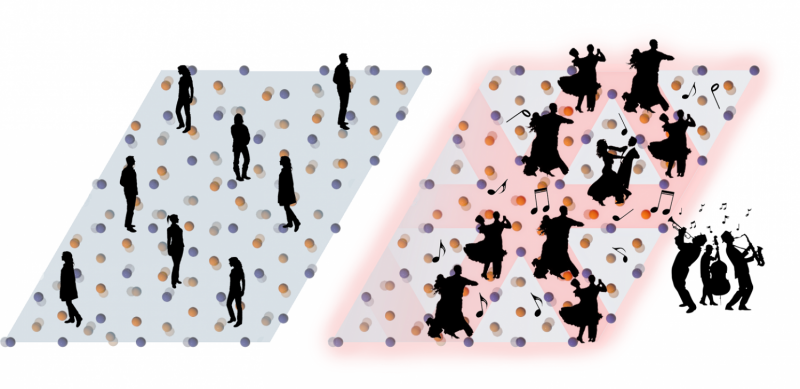Choreographing the dance of electrons

Scientists at the National University of Singapore (NUS) have demonstrated a new way of controlling electrons by confining them in a device made out of atomically thin materials, and applying external electric and magnetic fields. This research, published on Dec. 23, 2015 in the prestigious scientific journal Nature, was led by Professor Antonio Castro Neto and his research team at the Centre for Advanced 2D Materials (CA2DM) of the NUS Faculty of Science.
Almost all modern technology like motors, light bulbs and semiconductor chips runs on electricity, harnessing the flow of electrons through devices. Explained Prof Castro Neto, "Not only are electrons small and fast, they naturally repel each other due to their electric charge. They obey the strange laws of quantum physics, making it difficult to control their motion directly."
To control electron behaviour, many semi-conductor materials require chemical doping, where small amounts of a foreign material are embedded in the material to either release or absorb electrons, creating a change in the electron concentration that can in turn be used to drive currents.
However, chemical doping has limitations as a research technique, since it causes irreversible chemical change in the material being studied. The foreign atoms embedded into the material also disrupt its natural ordering, often masking important electronic states of the pure material.
The NUS research team was able to replicate the effects of chemical doping in this study by using only external electric and magnetic fields applied to an atomically thin material, titanium diselenide (TiSe2), encapsulated with boron-nitride (hBN). The researchers were able to control the behaviour of the electrons accurately and reversibly, making measurements that had been theoretical up to now. The thinness of the two materials was crucial, confining the electrons within the material to a two-dimensional layer, over which the electric and magnetic fields had a strong, uniform effect.
"In particular, we could also drive the material into a state called superconductivity, in which electrons move throughout the material without any heat or energy loss," Prof Castro Neto said.
Because they are atomically thin, two-dimensional superconducting materials would have advantages over traditional superconductors, in applications such as smaller, portable magnetic resonance imaging (MRI) machines.
One specific goal of the NUS research team is to develop high-temperature two-dimensional superconducting materials. Current materials require an extremely cold temperature of -270°C to function, ruling out exciting applications such as lossless electrical lines, levitating trains and MRI machines.
The technique, which took the researchers two years to develop, will enable new experiments that shine light on high-temperature superconductivity and other solid-state phenomena of interest. With a wide range of materials awaiting testing, electric field doping greatly widens the possibilities of solid-state science.
More information: L. J. Li et al. Controlling many-body states by the electric-field effect in a two-dimensional material, Nature (2015). DOI: 10.1038/nature16175
Journal information: Nature
Provided by National University of Singapore




















